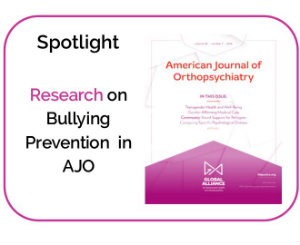Bullying Prevention
Although bullying can happen to any child, some groups – LGBTQ youth, youth with disabilities, and socially isolated youth, for example – may be at a greater risk of being bullied. The Centers for Disease Control has characterized bullying as a public health problem due to its prevalence and its adverse impact on physical and mental health. The impact of bullyingChildren who are bullied, who engage in bullying, or who observe the bullying of others experience a variety of problems. These problems include reduced school engagement and academic achievement, sleep problems, anxiety, depression, maladjustment, and, in some cases, suicide-related behaviors. Position Statement on Safe and Humane SchoolsThe health and well-being of young people is related to their engagement in their school community and to their experiences at school. Young people are more likely to thrive developmentally when they feel safe at school, when they are able to form positive relationships, and when they are encouraged to participate.
Our Spotlight features research in AJO on bullying. Related topics
Want to learn more?
What can you do?
|


